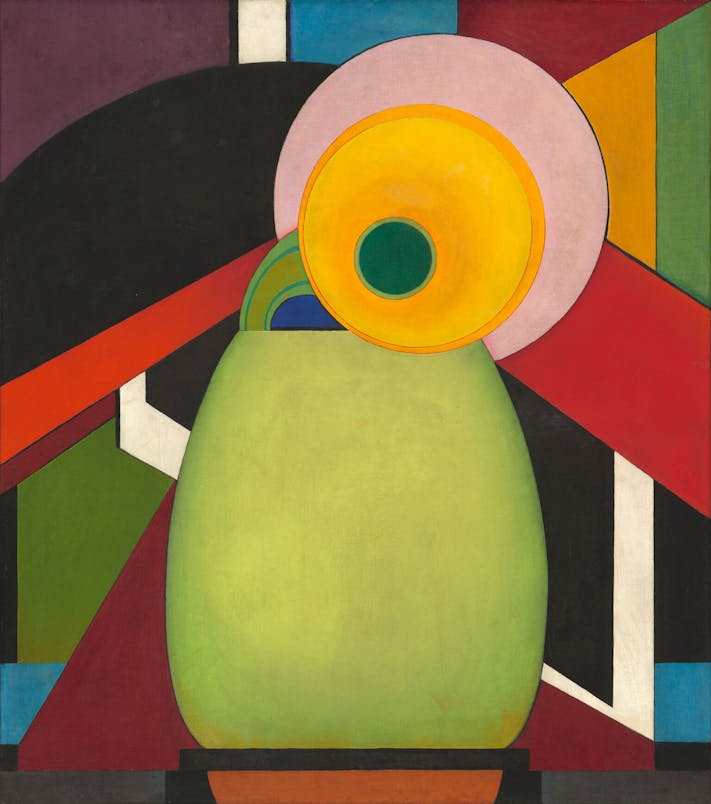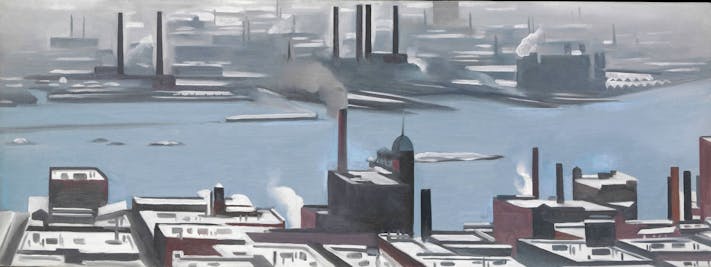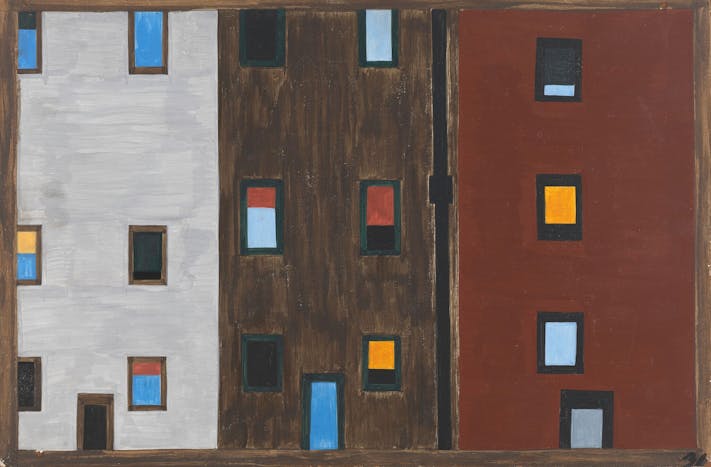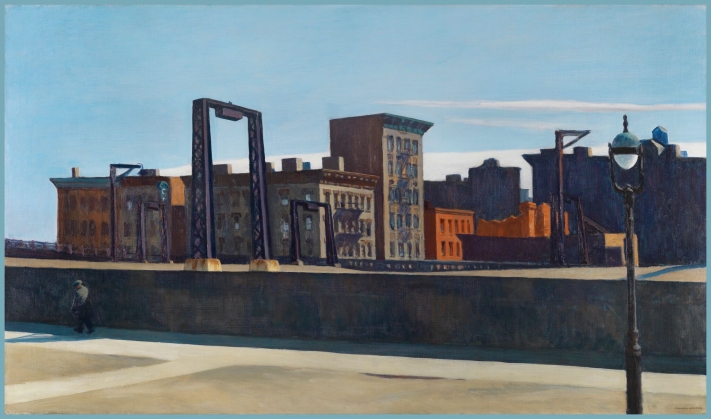
Loosely, this exhibition is divided into three sections. The first gallery presents abstract pictures that order the world into blocks of colour and form. These works brim with European influence, hewing towards cubism, as can be seen by Edward Steichin's 'Le Tournesol', a rare work from an artist who favoured photography and destroyed most of his paintings. The second gallery brings the Precisionists to the fore with a cool, detached style of clear lines and precise drawings. These are paintings of the industrial landscapes of the

Most exciting in this exhibition is the sheer number of works that are so rarely seen in Europe, with artists here that have no presence in UK galleries. Edward Hopper doesn't really fit the narrative of the exhibition; his works are less precise, and evoke a more potent sense of possibility - but one hardly balks at the opportunity to see the three stunning works of his that are on display, and his inclusion opens up the exhibition in a fascinating way. While a clear through line is present across the works, there is a diversity to them and their style, even within a particular artist's work. The quartet of pieces by Georgia O'Keeffe reflect the art movement around her and it is fascinating to compare 'Black Abstraction' with 'East River from the Shelton Hotel', painted only a year apart.

Throughout the exhibition there are deliciously intriguing asides the exhibition presents before galloping on with its overarching narrative; there are potential exhibitions buried in each of the galleries. The changing relationship between photography and art that would lead to 'Straight Photography', is here represented by examples of Paul Strand's photography, his style now ubiquitous in the art form. Then there are the examples of the democratisation of art in the pre-WW2 era, with several prints featured and copies of Fortune magazine on display. There is much to be said about the movement in the 20th century to increase public access to art, driven by innovations in printing and reproduction, which this exhibition simply doesn't have the space for. Also, there are the two paintings taken from Jacob Lawrence's The Migration Series. The only African American artist on display, Lawrence chronicled life in the city over the course of 60 paintings and this introduction leads one to want to learn more.
There is a lot to say about the Ashmolean's latest exhibition, almost too much. The exciting aspect is that you will be pulled through it by your own interests. If you are here for O'Keeffe and Hopper, the two most famous artists, you will be rewarded by striking works by each of these artists. But there is so much more on display. I haven't even touched on the fascinating precursor to Pop Art, Stuart Davis' 'Odol', or mentioned the brilliance of Chales Demuth's 'I Saw the Figure 5 in Gold'. There is no denying that for its quality and sheer volume of previously little-seen work, this exhibition is a must-see.




